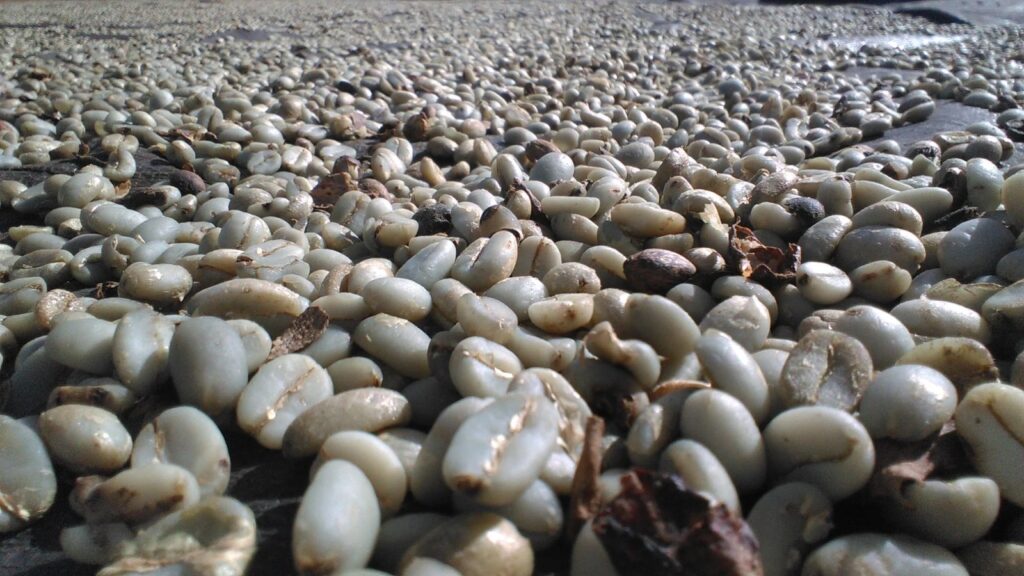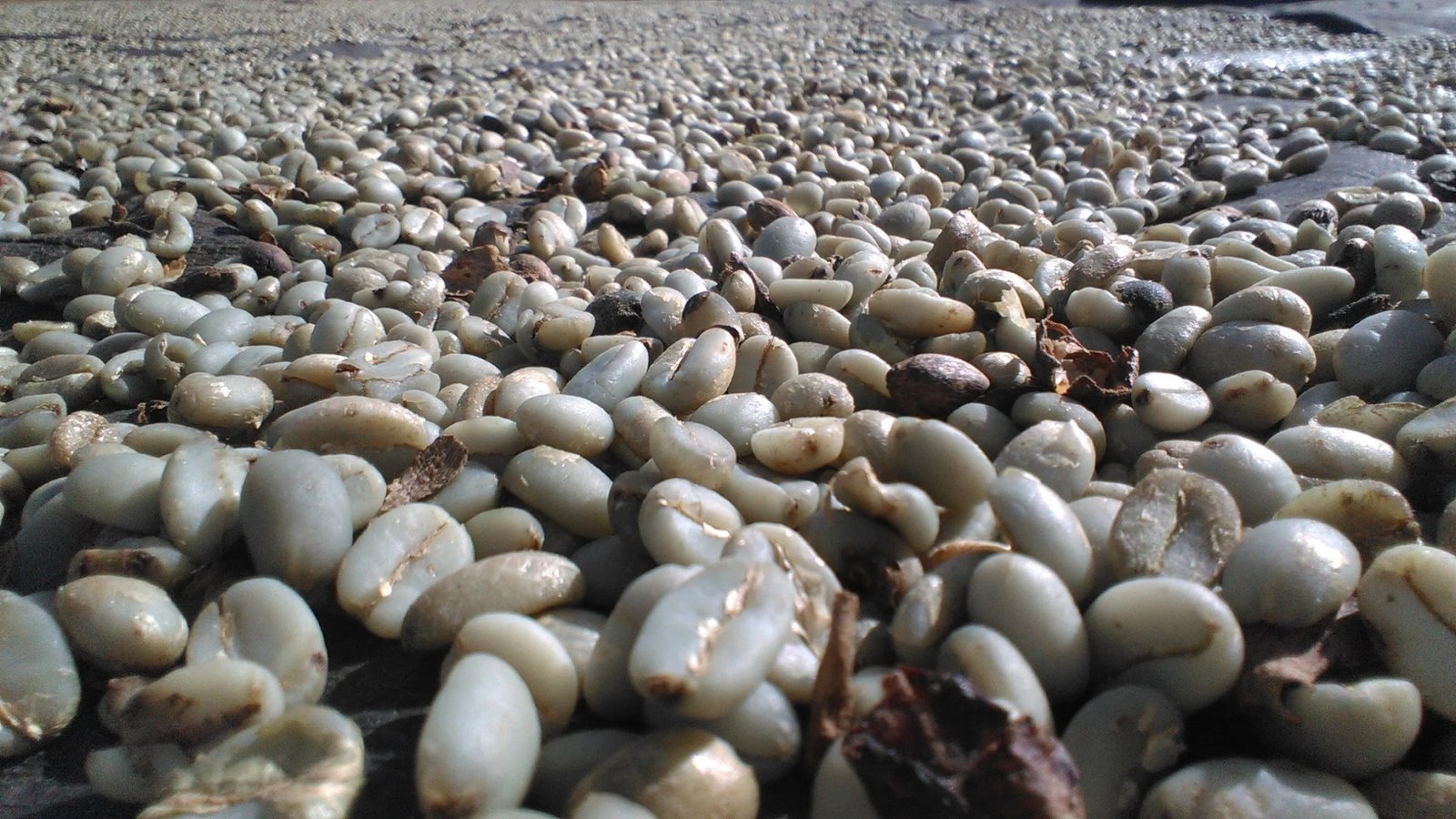
Decoding the Raw Coffee Bean: Honey Process vs. Wet Hulled – A Deep Dive
The world of specialty coffee is a complex and fascinating one, a tapestry woven with intricate processes, diverse origins, and passionate individuals. For those seeking to elevate their coffee experience, understanding the journey of the raw coffee bean is paramount. This article delves into the nuances of two prominent processing methods: the honey process and the wet-hulled (also known as giling basah) method, with a particular focus on the implications for the **raw coffee bean**.
The terms “honey process” and “wet-hulled” often spark curiosity among coffee enthusiasts, each representing a distinct approach to preparing coffee cherries for roasting. These methods significantly influence the final cup profile, impacting the acidity, body, and overall flavor characteristics. We will explore these methods, providing clarity on their differences, advantages, and the impact they have on the **raw coffee bean**’s ultimate destiny.
The Honey Process: A Sweet Embrace
The honey process, primarily practiced in Central America, is a method of processing coffee cherries that retains a significant amount of the mucilage, the sweet, sticky layer surrounding the bean. This mucilage, rich in sugars, contributes to the final cup’s sweetness, body, and complexity. The name itself, “honey,” refers to the sticky texture of the bean during this stage.
Here’s how the honey process typically unfolds:
- Harvesting: Ripe coffee cherries are carefully handpicked, ensuring only the most mature fruits are selected.
- Sorting: The cherries are sorted to remove any damaged or unripe ones.
- Pulping: The outer skin of the cherry is removed, exposing the mucilage-covered bean. The degree of pulping varies, leading to different “honey” classifications (e.g., yellow honey, red honey, black honey), which influence the amount of mucilage retained.
- Drying: The beans, still coated in mucilage, are dried on patios, raised beds, or mechanical dryers. The drying process is crucial, as the mucilage ferments and imparts its flavors to the **raw coffee bean**.
- Milling: Once the beans reach the desired moisture content, the dried mucilage is removed during the milling process.
The honey process typically results in a cup of coffee that is sweeter, with a more pronounced body and a complex flavor profile. The retained mucilage allows for a controlled fermentation, adding layers of complexity that contribute to the overall experience. The impact on the **raw coffee bean** is profound, shaping the flavor potential from the very beginning.
The Wet-Hulled (Giling Basah) Method: A Taste of Indonesia
The wet-hulled method, also known as giling basah in Indonesian, is a unique processing technique primarily associated with Indonesia, particularly Sumatra and Sulawesi. This method distinguishes itself from others by allowing the beans to be dried to a certain moisture level before the parchment is removed. This process is significantly different from other processes and directly affects the **raw coffee bean**.
Here’s a breakdown of the wet-hulled process:
- Harvesting and Pulping: Similar to other methods, ripe cherries are harvested and pulped to remove the skin.
- Partial Drying: The beans, still enclosed in their parchment, are partially dried to a moisture content of around 30-35%. This is a crucial step, as it allows for the parchment to be easily removed.
- Hulling: The beans are then wet-hulled, where the parchment is removed while the beans are still relatively moist. This is the defining characteristic of the process.
- Final Drying: The wet-hulled beans are then dried to the desired moisture content (typically 10-12%).
The wet-hulled method often results in a cup of coffee with a heavier body, lower acidity, and earthy flavor notes. The process itself contributes to the unique characteristics of the coffee, often described as having a syrupy mouthfeel and a complex, often bold, profile. The **raw coffee bean** undergoes a unique transformation during this process, absorbing flavors and characteristics that set it apart.
Comparing the Honey Process and Wet-Hulled Methods: A Table
To better understand the key differences, let’s compare the honey process and wet-hulled methods in a table:
| Feature | Honey Process | Wet-Hulled (Giling Basah) |
|---|---|---|
| Region of Origin | Central America (primarily) | Indonesia (Sumatra, Sulawesi, etc.) |
| Mucilage Retention | High (variable depending on honey type) | Minimal |
| Drying Method | Patio, raised beds, mechanical dryers | Partially dried before hulling, final drying |
| Flavor Profile | Sweet, complex, balanced acidity, pronounced body | Heavy body, low acidity, earthy, syrupy |
| Typical Processing Time | Longer | Shorter |
The table highlights key differences. The **raw coffee bean** is handled differently in each process, resulting in distinctive flavor profiles. Understanding these distinctions allows coffee enthusiasts to appreciate the nuances of each method and choose coffees that align with their preferences.
The Impact on the Raw Coffee Bean: A Deeper Dive
The processing method has a profound impact on the **raw coffee bean**. It’s not just about removing the cherry; it’s about shaping the flavor from the start. The honey process, with its retention of mucilage, allows for a controlled fermentation that contributes to sweetness and complexity. The wet-hulled method, with its unique drying and hulling stages, imparts a characteristic earthy flavor and a heavier body. These differences are directly reflected in the final cup, and the **raw coffee bean** is the key ingredient.
The way the **raw coffee bean** is treated during these processes affects several key aspects:
- Sugar Content: The honey process retains sugars from the mucilage, leading to a sweeter cup.
- Acidity: The fermentation process in the honey process can enhance acidity, while the wet-hulled method often results in lower acidity.
- Body: The honey process often produces a fuller body, while the wet-hulled method is known for its syrupy body.
- Flavor Complexity: The honey process tends to produce more complex flavors due to the fermentation of the mucilage. The wet-hulled method can also develop complex flavors, often with earthy undertones.
The **raw coffee bean** acts like a sponge, absorbing flavors from its environment and the processing method. The choices made during processing significantly influence the final flavor profile.
Choosing the Right Coffee: Understanding Your Preferences
Ultimately, the “best” coffee is subjective and depends on individual preferences. However, understanding the honey process and the wet-hulled method can help you make informed choices when selecting your coffee. If you enjoy a sweeter, more complex cup with balanced acidity, coffee processed using the honey method might be a good choice. If you prefer a heavier body and earthy notes, the wet-hulled method could be more appealing. Understanding the **raw coffee bean**’s journey allows you to appreciate the artistry of coffee processing.
Consider these factors when choosing your coffee:
- Flavor Profile: What kind of flavors do you enjoy? Sweet, fruity, earthy, or something else?
- Acidity: How much acidity do you prefer?
- Body: Do you prefer a light, medium, or full body?
- Origin: Where is the coffee from? Different regions are known for different processing methods.
By considering these factors, you can explore the diverse world of coffee and discover the processing methods that best suit your palate. The **raw coffee bean** is the foundation for this journey.
The Future of Coffee Processing: Innovation and Sustainability
The coffee industry is constantly evolving, with ongoing innovation in processing methods. New techniques are being developed to improve flavor, reduce waste, and promote sustainability. Understanding the honey process and wet-hulled methods provides a foundation for appreciating these advancements. The **raw coffee bean** is at the center of these innovations. [See also: Coffee Processing Innovations]
Sustainability is a growing concern within the coffee industry. Sustainable practices aim to minimize environmental impact and support coffee farmers. Choosing coffees that are ethically sourced and processed using sustainable methods is a way to support the industry’s future. The **raw coffee bean** and its journey are impacted by these practices.
Conclusion: Embracing the Journey of the Raw Coffee Bean
The honey process and wet-hulled method represent two distinct pathways in the journey of the **raw coffee bean**. Each method imparts unique characteristics, influencing the final cup’s flavor profile, acidity, and body. By understanding these processes, coffee enthusiasts can deepen their appreciation for the artistry and complexity of specialty coffee. Whether you prefer the sweetness of a honey-processed coffee or the earthy notes of a wet-hulled bean, exploring the world of coffee processing is a rewarding experience. The knowledge of how the **raw coffee bean** is processed is key.
Enjoy the journey of discovery, and savor the diverse flavors that the **raw coffee bean** has to offer.


